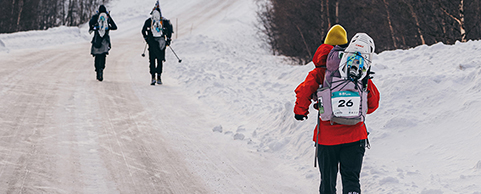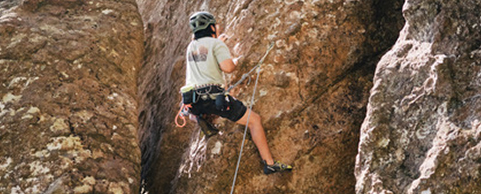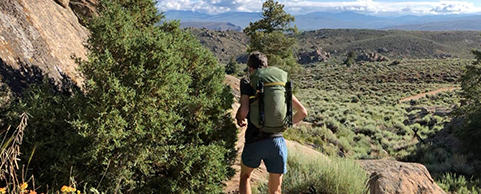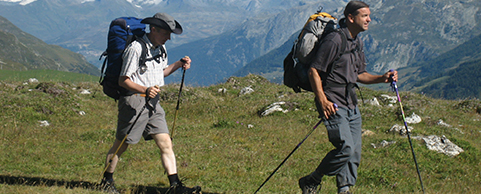Guide to Hiking Mount Kilimanjaro

Mount Kilimanjaro
“As sure as Kilimanjaro rises like Olympus above the Seerengetttiiiiiii” – Toto’s song Africa was my first introduction to Kilimanjaro. And no, unfortunately you cannot see Kilimanjaro from the Serengeti – something which I was very disappointed to find out whilst on safari in the Serengeti.
Mount Kilimanjaro in Tanzania is the tallest mountain in Africa and the highest single freestanding mountain in the world. Most trekkers head to Kilimanjaro from June to October for drier weather but it is open all year round.
There are many routes to the summit of varying length, difficulty and scenery. I took the Marangu route – it is the shortest route, and considered the easiest route despite having the highest summit fail rate. As I stood on Uhuru Peak (5895m), it was hard to believe that less than 72 hours ago, I was only just signing in to the trek at Marangu Gate (1870m) – this also explained why I felt like a weak, intoxicated ragdoll after the euphoria of making it to the summit wore off. If you have the time, I would recommend an alternate route which allows for more adequate acclimatisation.
Here I will go through some gear recommendations and tips to help make your Kilimanjaro summit bid a success, and as comfortable as possible.

Footwear
If you plan on tackling Kilimanjaro, I would recommend a pair of waterproof mid to high cut boots that fit well and are worn in. High altitude can make you fatigued and disorientated, potentially causing slips and trips whilst walking. Boots are supportive and can reduce the risk of rolling your ankle if you do misstep.
Boots also provide extra protection for your feet which will come in handy when “scree-skiing” down the slope of Kibo Dome. Be aware that lightweight boots may not fare as well as their heavier counterparts as you go careening down from the summit.
Boots with a Goretex or waterproof liner will stop your feet from getting wet from rain and snow. They will be warmer, which is a blessing for the summit push. I would steer away from lightweight mesh trail runners as the risk of frostbite on your toes will be very real. Consider wearing your boots or having them in your hand luggage when travelling to Tanzania. If your luggage gets lost in transit then at least you will have your trusty boots with you.
Pair your choice of footwear with medium cushioned wool or synthetic socks. For the summit push, thermal liners and thick heavy cushioned thermal socks make an ideal combination. For my summit night, I double socked with a pair of medium and heavy cushioned wool socks with my waterproof leather boots. Despite this combination, my feet were still cold. I did not feel my feet for the many hours trudging towards Uhuru Peak. Socks can double as a cozy for your phone, electronics and your water bottle.
Gaiters are not essential but I do recommend using them – they come in very handy when descending down scree slopes. My go to for gaiters are the Outdoor Research Crocodile gaiters – they are waterproof, durable, protective and available in a range of funky colours.
Clothing
What to wear and pack for Kilimanjaro can be quite a challenge. There are four distinct climatic zones which you will need to dress and prepare for as you make your way up the mountain.
- Rainforest zone where it is warm and humid.
- Heath and moorland zone which is a low alpine area that is semi-arid.
- High alpine desert where it is dry, windy and exposed.
- Arctic zone where conditions are cold and the air very thin.
Having a layering system which works for you is very important. Correctly layering your clothes for the conditions will keep you comfortable and protect you from the elements. Each layer of clothing has a function:
- Base layer: manages moisture and regulates your temperature.
- Mid and insulating layers: keep you warm and insulated.
- Outer layer: protects you from the elements such as wind, rain and snow.
Base Layer
Your base layer sits next to your skin and should wick sweat and moisture away from your body to keep you dry and comfortable. Stick to merino or synthetic base layers for best performance. Avoid cotton products as they will absorb your sweat and become wet, making you cold and potentially hypothermic.
For the warm and humid low elevation, a lightweight 150 to 200 weight merino or synthetic top will serve you well as a base layer. For cold conditions, your base layer should fit snugly to trap body heat and keep you warm. For walking in the cold, I would recommend the Icebreaker 260 Tech top and leggings as they will keep you warm and regulate your temperature during activity. If you tend to sweat a lot even in cold conditions then I would recommend synthetic base layers such as the Mont Power Dry. Synthetics will absorb less moisture than merino and this will stop you becoming hypothermic or feeling colder when you stop for rests in cold weather.
Mid Layer
This is something you wear on top of your base layer to provide extra warmth. Most mid layers are made of fleece or wool. I would recommend mid layers which have a half or full zip as they will offer more flexibility with your ability to regulate heat. I prefer mid layers without a hood as my outer and/or insulating layer already has a hood. So long as you have a good insulating layer, then I would recommend a mid-weight fleece as they are warm and comfortable to wear, meaning they will be more versatile to use for other trips. If you are a person who particularly feels the cold, then I would bring along a pair of fleece pants as well such as the Rab Power Stretch Pro Pant.
Insulating Layer
A synthetic or down insulating layer will provide extra warmth at a much higher warmth-to-weight ratio than your mid layer. Down is warmer, lightweight and packable in comparison to synthetic insulation. The drawback of down is that once it gets damp or wet, it will no longer keep you warm. This is why synthetic insulated jackets are popular for wet and rainy conditions.
For Kilimanjaro I would recommend the Mont Fusion down jacket to keep you toasty warm on the cool evenings and cold summit push. Its box-wall construction and water resistant and windproof Hydronaute XT outer fabric will ensure you stay warm. If you prefer a synthetic jacket then the Rab Generator is a good option that will keep you warm.
Outer Layer
Your outer layer is usually considered to be your waterproof jacket and pants. It will protect you from the elements and keep you dry. Ensure your outer layer will fit comfortably over your other layers.
The best outer layers will:
- Offer some breathability even though they are waterproof.
- Have taped seams and waterproof zipper systems.
- Be constructed of 3 layers for improved durability.
It is best to try on a range of different outer layers to see what fit, features and design suits you and your needs. A good place to start would be the Rab Arc jacket and Outdoor Research Apollo Pants as they will perform well on Kilimanjaro and other trips.
If you are after something more durable and with a few more features than my outer layers of choice, the Arcteryx AR series and Rab Firewall Rain pants I have personally found these to be durable and comfortable, with all the features I want for my normal hiking and alpine adventures.
So where do your regular hiking pants fit in?
In warmer weather in the lower altitudes, you will not need to wear a base layer under your hiking pants. As it gets cooler you may want to layer your pants over your base layer, and for the summit push you will likely layer your waterproof pants over both of them! If you prefer warmer or thicker hiking pants, then I would consider a lined softshell pant such as the Outdoor Research Cirque Pant as they will be warmer and provide more weatherproofing than regular hiking pants.
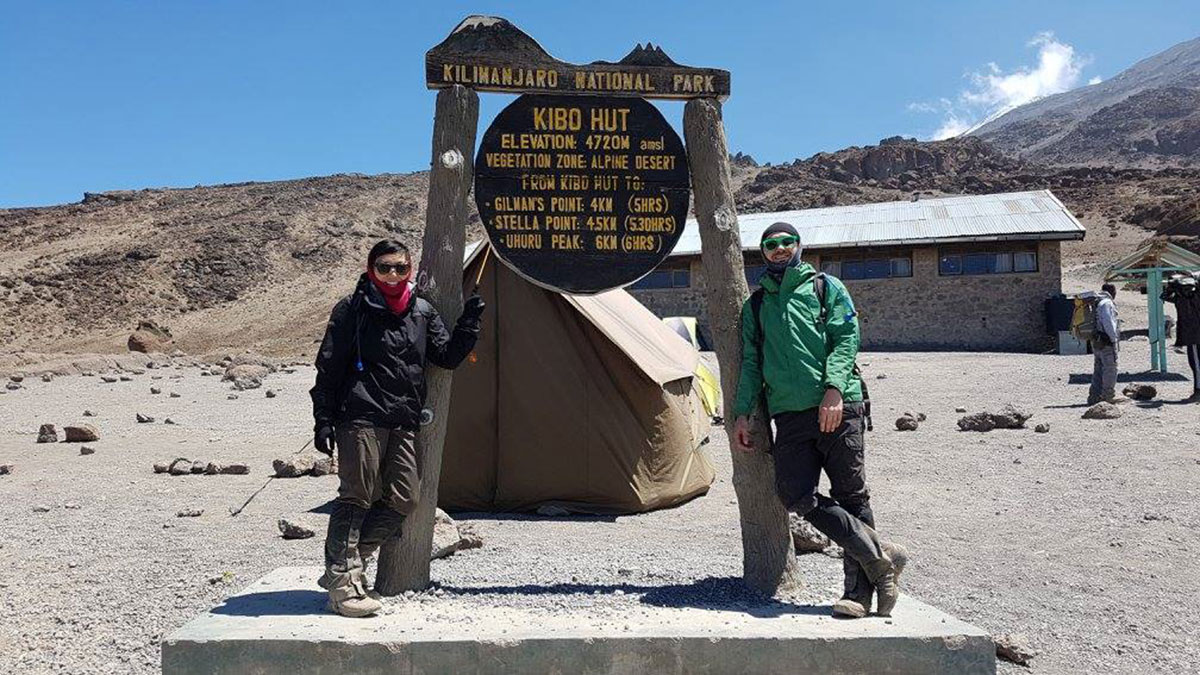
Head
It is a myth that we lose most of our body heat through our heads! Though, our face and head are more sensitive to changes in temperature than the rest of the body, which is why covering them up is so important in cold conditions.
Some guides will recommend a balaclava for the summit push but I find them super uncomfortable and prefer to use a combination of 2 Buffs/neck gaiters if I want to cover most of my face - one around my neck pulled up to below my eyes, and one around my head pulled down to above my eyes. This way if I need to scratch or get too hot then I can easily adjust them.
A nice warm beanie is essential. Make sure it covers your ears! If you are like me and tend to get a hot head but cold ears then consider using ear/head bands such as the Outdoor Research Ear Band which is made of Windstopper material. Don’t forget to pack a beanie as well; you’ll miss it if you leave it behind.
Pack a sun hat and a pair of good quality sunglasses as UV intensity increases with altitude gain. Snow on the summit will also reflect and intensify visible light so make sure you pack your sunnies in your summit bag.
Hands
We often get asked what gloves to pack for Kilimanjaro. Most people will need 2 pairs of gloves – a liner glove paired with an insulated waterproof outer. I would recommend a thin fleece glove to be your liner glove, as they will be useful in evenings when the temperature drops. The outer glove will be used together with the liner for more extreme conditions, such as the summit push where it may be windy with sub-zero temperatures. Your outer glove should fit comfortably over your fleece liner and be waterproof.
My go to would be the Outdoor Research Arete glove. It is warm and comes with both gloves. It also has a stash pocket on the inner glove for hand warmers if you need extra warmth. If you prefer an outer mitt or feel you will need something warmer then I would recommend the Outdoor Research Mt Baker Modular Mitt which has a glove liner and mitt outer.
I brought along some hand warmers but did not end up using them with my gloves, despite my hands feeling frozen for the whole summit push. I was exhausted and not thinking very clearly so could not be bothered to use them! Bring an extra set of warmers if you want to take summit photos as they come in handy to stop your electronics from losing all their charge from the cold weather.
Sleep and Shelter
Most trekking companies will provide tents and sleeping mats and will hire out appropriate sleeping bags for Kilimanjaro. If you are taking the Marangu route, then tents and sleeping mats are not required as they have permanent hut structures.
If you prefer to bring you own or they are not provided then a:
- 4-season tent is the minimum required but an expedition tent would be preferred. Please refer to our Tent Buying Guide.
- Highly insulated sleeping mat will be needed for the cold conditions. I would highly recommend the Exped Dura 8R M. It uses down for insulation and is one of the warmest hiking mats on the market. It comes with a Exped exclusive Schnozzel bag, so inflation is easy on the go.
The highest camps you will be sleeping at are in the alpine desert zone at Barafu Camp 4600m or Kibo Hut 4700m, depending on which route you are taking. At this altitude it can quickly drop to below freezing temperatures. A 4-season sleeping bag appropriate for alpine conditions is recommended, with a comfort temperature rating of at least -15C.
Quality sleeping bags are filled with either down or synthetic insulation to keep you warm. A down sleeping bag is preferred as it has superior warmth to weight ratio. Down sleeping bags are lighter, warmer and much more compressible than a synthetic bag.
I would recommend the Mont Spindrift 850 sleeping bag. It is:
- Down filled bag to keep size and weight to a minimum
- Mummy shaped which is the most thermally efficient sleeping bag shape.
- Has a full zip so you can open it up on nights which are warmer.
- Made with Hydronaute XT for the shell which is a waterproof and breathable fabric.
- Has a temperature rating of -13°C to -19°C which is adequate for your average trekker on Kilimanjaro.
Consider pairing your sleeping bag with a thermal liner. This will not only increase its warmth, but will help to keep your sleeping bag clean.
You could get away with a less insulated sleeping bag if you are a warm sleeper or willing to sleep with all your clothes on. Do so at your own risk. An alpine sleeping bag is a big financial investment so if you don’t have many alpine trips planned then it may be more beneficial to hire a sleeping bag from your trek company.
Don’t forget to pack a comfortable camping pillow!
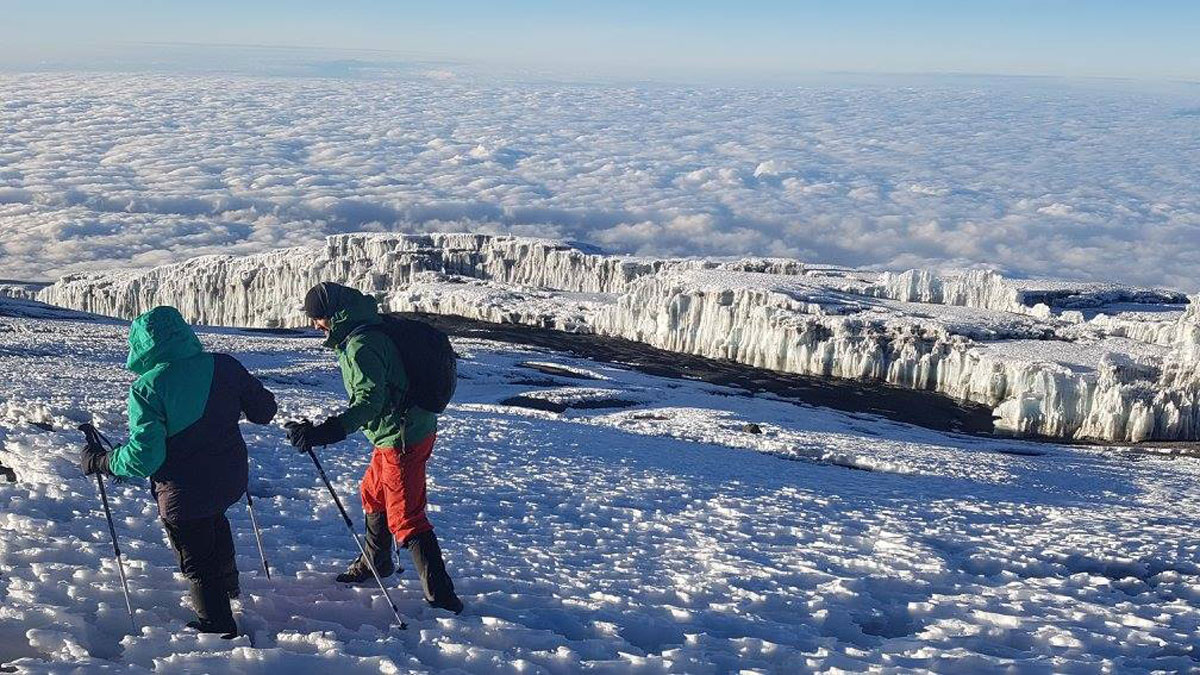
Safety
Since all trekkers are required to be accompanied by a registered and licensed guide on Kilimanjaro, a personal locator beacon (PLB), guidebook, map and compass are not necessary. Guides will carry a first aid kit, but I would still recommend carrying your own with all your personal medications and a blister kit. Bring sunscreen, lip balm and hand sanitiser. Make sure you pack this in your day bag as the porters carrying your luggage will speed ahead of you.
Water
It is important to stay hydrated when hiking, especially so when hiking in altitude. You will need to drink more water than usual to stay hydrated. In higher elevations, there is less humidity so the air is drier. This means that moisture will evaporate more quickly from your skin. It is likely you will be breathing faster and deeper than usual as the air is thinner, meaning with every breath you are also losing moisture. Many trekkers will take Diamox (acetazolamide) to prevent altitude sickness. This is a diuretic, so you will be peeing more than usual. So, stay hydrated!
Most trekking companies will provide you with drinking water for the whole day so make sure you have enough capacity to carry however much water you think you will need. I had a 3L Camelbak Reservoir (bladder) and a 1L Nalgene bottle which was adequate for my needs. The water they supply is potable but many of us chose to filter or treat it ourselves. Check with your trek company about how they treat their water. If you plan to use tablets then I would recommend Katadyn Micropur tablets as they kill all microorganisms, including giardia and cryptosporidium. They also don’t taste terrible.
If you are using a hydration bladder then the tubing is likely to freeze on your summit push, rendering your bladder useless. If your bladder and tubing is not insulated then wrap them up in clothing. Make sure you ALWAYS blow the water back into the bladder after use to try and prevent it from freezing. To ensure I was not without water if my bladder froze, I also had my Nalgene in my pack insulated with some socks.
The 1L Nalgene bottle is very versatile. You can also ask your guide to fill your Nalgene with boiled water to use as a hot water bottle overnight which will feel extra luxurious whilst you are climbing up the mountain.
Pack
I would suggest a hiking day pack around 30L in size. This will comfortably fit your water, food, extra clothing layers and first aid kit for the day. My daypack was only 20L and it was a pain to squeeze everything in. 30L is the ideal size as your porter will be carrying the bulk of your luggage. Try on a few different day packs with at least 5kg of weight in them to see what is most comfortable for you. Hiking specific day packs are best as they are usually hydration bladder compatible and come with trekking pole holders.
Trekking Poles
These are an optional item but I would highly recommend them. High altitude can make you more fatigued and disorientated, potentially making you more prone to slips and trips whilst walking. My poles saved me from falling over a few times. They were also useful as a resting pole when I was exhausted and to help keep balance whist scree-skiing down the mountain. They will be a blessing on your knees and ankles for the long downhill.
Miscellaneous
A head torch is necessary for the summit push to light up the path in the darkness. It will also be needed for around the campsite and any toilet trips during the night. My Black Diamond Spot head torch has never let me down and has all the features I need including adjustable brightness. Remember to pack some spare batteries as well.
Make sure to pack enough toilet paper and hand sanitiser! There are no showers on Kilimanjaro so pack some wet wipes if you want to add a sense of decorum to your mountain trip. And for the ladies, time spent in high altitude can affect your menstrual cycle – so come prepared.
High altitude affects everyone in different ways, so make sure to listen to your body and your guide. The changing landscapes as you make your way up Kilimanjaro are breathe taking (as is the lack of oxygen!). I have fond memories of learning Swahili songs about Kilimanjaro during the trek and still say “pole pole” which is Swahili for “slowly slowly” to myself whenever I’m hiking in altitude. Kilimanjaro can feel like a great challenge, but as you slowly make your way to the summit in the dark, you will discover the strength you didn’t know you had.
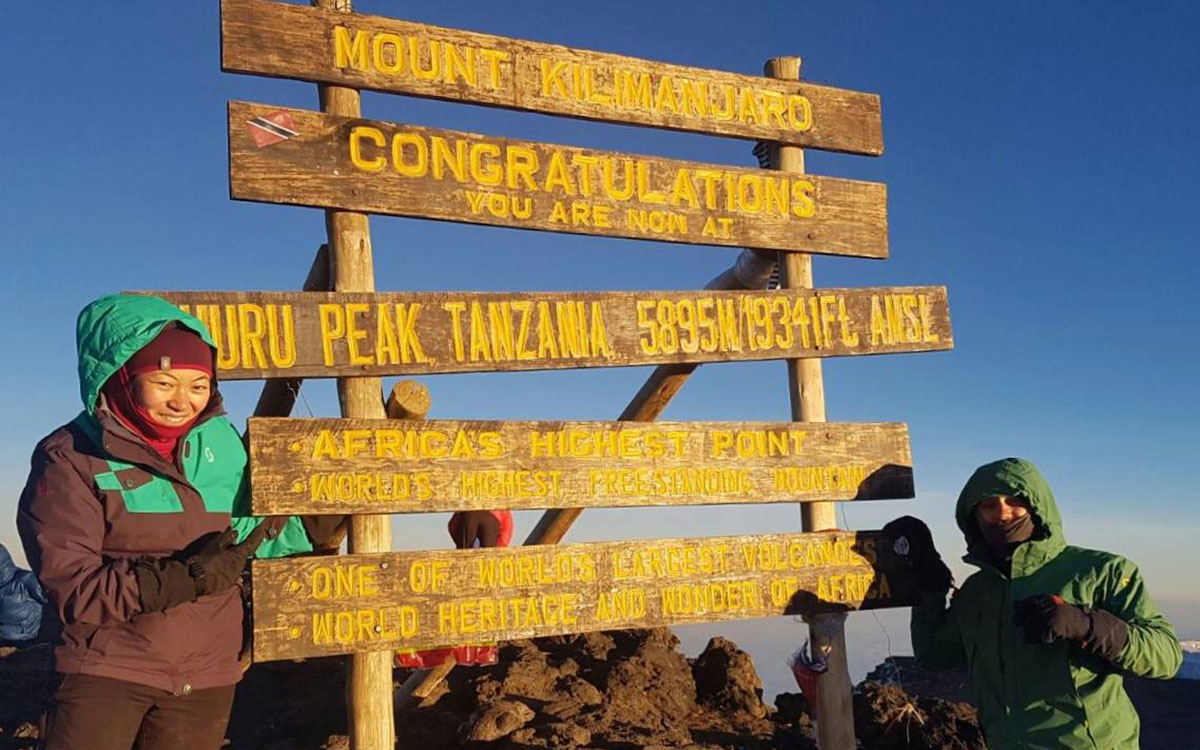
Summit!
Questions? Visit us, email us or call us (03 9600 0599).
More Articles
- Hiking Greenland's Arctic Circle Trail
- Hiking the Australian Alps Walking Track (AAWT)
- Tips for Sleeping Warm When Camping
- MORE RESOURCES...













